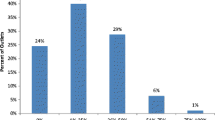Abstract
This paper describes a study of eight ex-cocaine sellers located via chain referral from eight different levels of sales. To be eligible for the study respondents must have sold cocaine steadily for at least a year and have stopped selling for at least six months. The authors describe modes and levels of entree into cocaine sales, and the subtle transformation of identity that occurs when a person moves from a user to a dealer. The interviews suggest that entry into social worlds of cocaine sales is a fluid process akin to Matza's notion of drift (1964). Five basic ways in which people begin to sell cocaine are identified. The first is to become a go-between, a seller who starts out buying only for friends and only later envisions the profit possibilities. The second mode is to become a stash dealer, a person who sells small amounts in order to better afford their own cocaine use. The third style, the connoisseur, is characterized by the user's desire to buy high quality drugs through wholesale purchases. The fourth mode of entree may be called apprenticeship, trainee-style relationships where the novitiate lives with an established seller, learns the ropes, shares the dope, and eventually takes over all or part of the experienced dealer's business. Finally, there is product line expansion, wherein dealers start outselling other drugs, usually marijuana, and move into cocaine sales when it becomes available.
Similar content being viewed by others
References
Adler, P. (1985).Wheeling and Dealing: An Ethnography of an Upper-Level Drug Dealing Community. New York: Columbia University Press.
Becker, H. S. (1953). “Becoming a marijuana user.”American Journal of Sociology 59:235–242.
Becker, H. S. (1986).Pathways from Heroin Addiction. Philadelphia: Temple University Press.
Biernacki, P., & Waldorf, D. (1981). “Snowball sampling: problems and techniques of chain referral sampling.”Sociological Methods and Research 10:141–163.
Broadhead, R. (1983).The Private Lives and Professional Identity of Medical Students. New Brunswick, New Jersey: Transaction Books.
Feldman, H. W. (1968). “Ideological supports to becoming and remaining a heroin addict.”Journal of Health and Social Behavior 9:131–139.
Fields, A. (1985). “Weedslingers: a study of young black marijuana dealers.”Urban Life 13:247–270.
Goldstein, P., Brownstein, H, Ryan, P., & Belucci, P. (1989). “Crack and homicide in New York City, 1988.”Contemporary Drug Problems 16:651–687.
Grinspoon, L., & Bakalar, J. (1976).Cocaine: A Drug and Its Social Evolution. New York: Basic Books.
Hughes, E. (1951). “Work and the self.” In John Rohrer and Muzafer Sherif (eds.),Social Work at the Crossroads. New York: Harper and Brothers, 313–323.
Langer, J. (1977). “Drug entrepreneurs and dealing culture.”Social Problems 24:377–386.
Lindesmith, A. (1947).Addiction and Opiates. Chicago: Aldine Press.
Macdonald, P., Waldorf, D., Reinarman, C., & Murphy, S. (1988). “Heavy cocaine use and sexual behavior.”Journal of Drug Issues 18:437–455.
Murphy, S., Reinarman, C., & Waldorf, D. (1989). “An eleven year follow-up of a network of cocaine users.”British Journal of the Addictions 84:427–436.
Matza, D. (1964).Delinquency and Drift. New York: Wiley.
Matza, D. (1969).Becoming Deviant. Englewood Cliffs, NJ: Prentice-Hall.
Morales, E. (1986a). “Coca culture: the white gold of Peru.”Graduate School Magazine of City University of New York 1:4–11.
Morales, E. (1986b). “Coca and cocaine economy and social change in the Andes in Peru.”Economic Development and Social Change 35:143–161.
Morales, E. (1988).Cocaine: The White Gold Rush in Peru. Tucson, AZ: University of Arisona Press.
Plasket, B., & Quillen, E. (1985).The White Stuff. New York: Dell Publishing Company.
Preble, E., & Casey, J. H., Jr. (1969). “Taking care of business: the heroin user's life on the streets.”The International Journal of the Addictions 4:1–24.
Reinarman, C., Waldorf, D., & Murphy, S. (1988). “Scapegoating and social control in the construction of a public problem: empirical and critical findings on cocaine and work.”Research in Law, Deviance and Social Control 9:37–62.
Reuter, P. (1990).Money from Crime: The Economics of Drug Dealing. Santa Monica, CA: Rand Corporation.
Rosenbaum, M. (1981).Women on Heroin. New Brunswick, New Jersey: Rutgers University Press.
Sanabria, H. (1988).Coca, Migration and Socio-Economic Change in a Bolivian Highland Peasant Community. Ph.D. thesis, University of Wisconsin.
Sanchez, J., & Johnson, B. (1987). “Women and the drug crime connection: crime rates among drug abusing women at Riker's Island.”Journal of Psychoactive Drugs 19:205–215.
Sykes, G., & Matza, D. (1957). “Techniques of neutralization.”American Sociological Review 22:664–670.
Thompson, E. P. (1971). “The moral economy of the English crowd in the eighteenth century.”Past and Present 50:76–136.
Waldorf, D., Reinarman, C., Murphy, S., & Joyce, B. (1977).Doing Coke: An Ethnography of Cocaine Snorters and Sellers. Washington, D.C.: Drug Abuse Council.
Waldorf, D., Reinarman, C., & Murphy, S. (1991).Cocaine Changes. Philadelphia: Temple University Press.
Watters, J. K., & Biernacki, P. (1989). “Targeted sampling: options for the study of hidden populations.”Social Problems 36:416–430.
Williams, T. (1989).The Cocaine Kids. New York: Addison-Wesley.
Author information
Authors and Affiliations
Additional information
The research reported herein was funded by a grant from the National Institute of Justice (#7-0363-9-CA-IJ)), Bernard A. Gropper, Ph.D., Program Manager, Drugs, Alcohol and Crime Programs, Center for Crime Control Research. The views expressed herein are those of the authors alone. The authors are grateful to the anonymous reviewers ofQualitative Sociology for helpful comments.
Rights and permissions
About this article
Cite this article
Murphy, S., Waldorf, D. & Reinarman, C. Drifting into dealing: Becoming a cocaine seller. Qual Sociol 13, 321–343 (1990). https://doi.org/10.1007/BF00989408
Issue Date:
DOI: https://doi.org/10.1007/BF00989408




